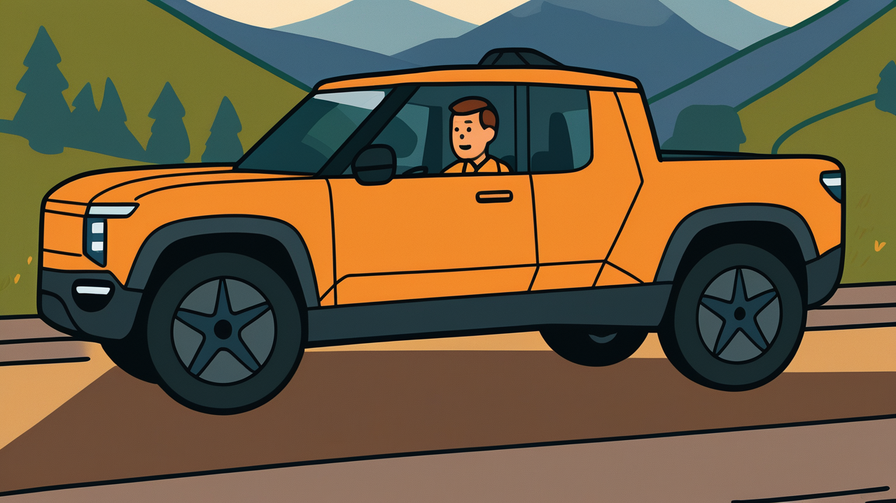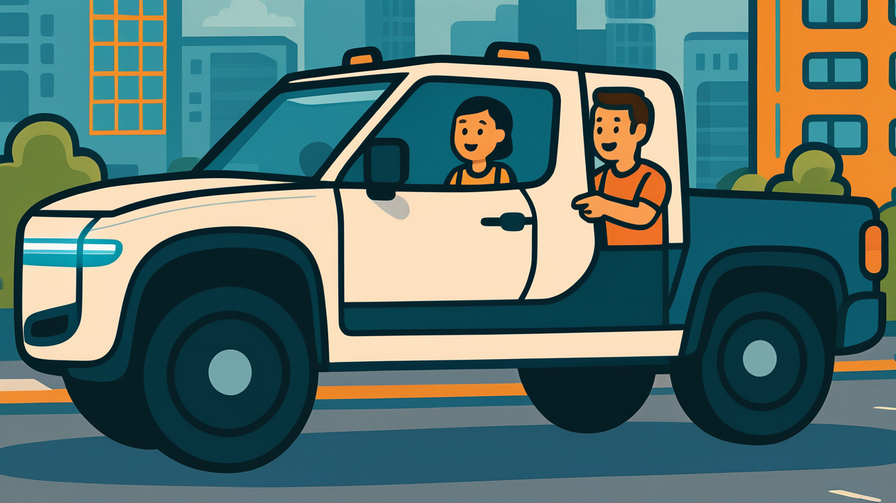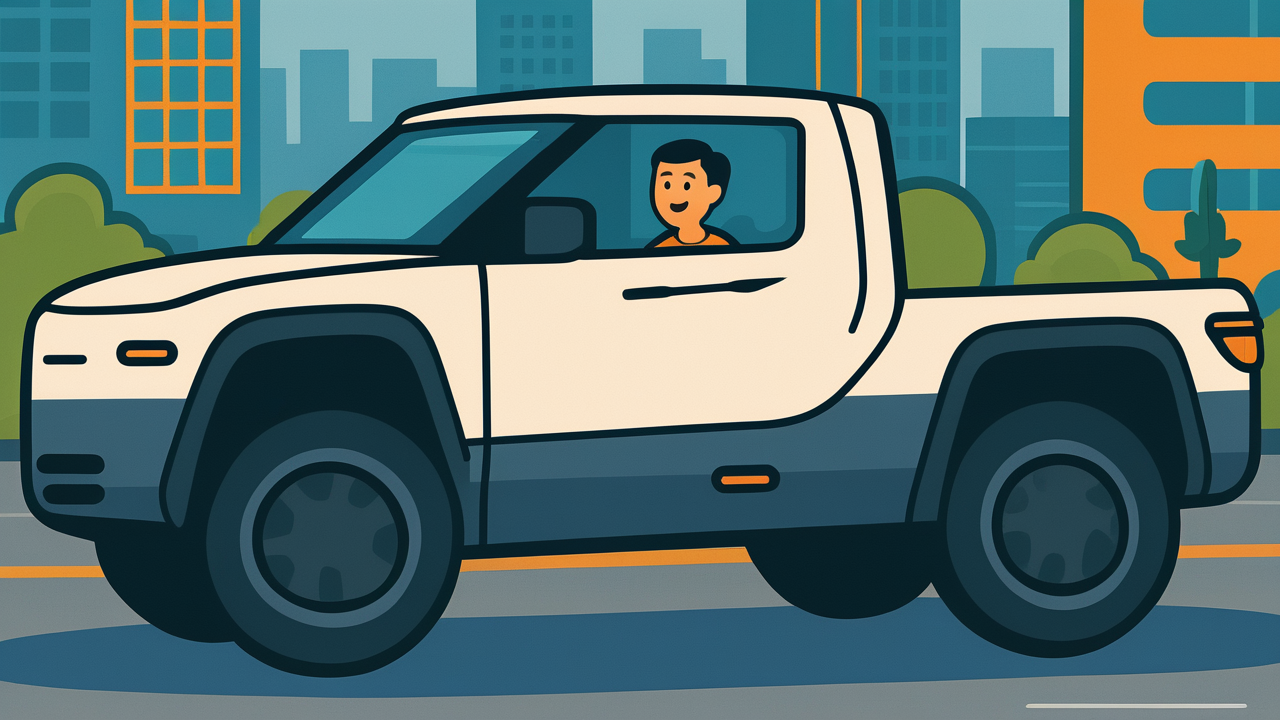[Disclaimer] This article is reconstructed based on information from external sources. Please verify the original source before referring to this content.
News Summary
The following content was published online. A translated summary is presented below. See the source for details.
Rivian, the American electric vehicle manufacturer known for its adventure-focused trucks and SUVs, has announced a partnership with Google to integrate Google Maps into its vehicles’ navigation systems. This collaboration will bring Google’s advanced mapping technology directly into Rivian’s infotainment displays, replacing the current navigation system. The new Google Maps integration will offer electric vehicle-specific features including real-time charging station availability, route planning that accounts for battery range, and integration with Rivian’s trip planning features. Drivers will benefit from Google’s constantly updated traffic information, detailed point-of-interest data, and familiar user interface. The system will also provide crucial EV-specific information such as elevation changes along routes (which affect battery consumption), charging stop recommendations based on current battery levels, and integration with charging networks to show real-time availability and pricing. This update represents a significant enhancement to the Rivian ownership experience, addressing one of the key concerns for EV drivers: range anxiety and charging logistics.
Source: Google Blog
Our Commentary
Background and Context

Rivian burst onto the electric vehicle scene in 2021 with its R1T pickup truck and R1S SUV, targeting outdoor enthusiasts who want zero-emission adventures. Unlike traditional automakers, Rivian built its software in-house, including its original navigation system. However, creating and maintaining mapping software is incredibly complex and expensive, requiring constant updates for roads, businesses, and traffic patterns. Google Maps, used by over 1 billion people monthly, has spent decades perfecting its mapping technology and has recently focused on EV-specific features as electric vehicles become more common.
Expert Analysis
Automotive technology experts see this partnership as a smart move for both companies. For Rivian, partnering with Google allows them to focus resources on what they do best – building innovative electric vehicles – rather than trying to compete with tech giants in mapping. For Google, this represents another foothold in the automotive industry as cars become increasingly connected. The EV navigation challenge is unique because drivers must consider charging stops, unlike gas vehicles where stations are everywhere. Google’s ability to show real-time charger availability could significantly reduce “range anxiety” – the fear of running out of battery power.
Additional Data and Fact Reinforcement
Navigation is crucial for EVs because route planning directly impacts range. Driving uphill can reduce battery range by up to 40%, while regenerative braking on downhills can recover energy. Current Rivian vehicles have ranges between 230-400 miles depending on configuration. Google Maps processes over 20 million updates daily from users and partner data. The EV charging network in the US includes over 100,000 public charging points, but they’re operated by different companies with varying payment systems and availability. Studies show that 80% of EV drivers cite charging infrastructure concerns as their top worry, making accurate navigation essential.
Related News
This announcement follows a trend of traditional automakers partnering with tech companies for software. General Motors is integrating Google services across its brands, while Ford partners with Google for cloud and AI services. Tesla, notably, continues using its proprietary navigation system. The partnership also comes as Rivian faces production challenges and recently announced layoffs to control costs. Meanwhile, Google has been expanding its automotive presence, with Android Automotive (different from Android Auto) being adopted by Volvo, Polestar, and others. Apple has also been rumored to be developing CarPlay into a more comprehensive vehicle operating system.
Summary

Rivian’s adoption of Google Maps represents a practical solution to a complex challenge facing all EV manufacturers. By leveraging Google’s proven mapping technology and adding EV-specific features, Rivian can offer customers a better navigation experience while focusing its resources on vehicle development. This partnership demonstrates how collaboration between automotive and tech companies can accelerate the transition to electric vehicles.
Public Reaction
Current Rivian owners have expressed mixed reactions on forums and social media. Many welcome the Google Maps integration, citing frustrations with the current system’s occasional routing errors and outdated charging station information. Some owners worry about privacy implications of Google integration and whether the system will require a Google account. Prospective buyers see this as a positive development, with many commenting that familiar interfaces like Google Maps make the transition to EVs less daunting. Auto enthusiasts debate whether Rivian is giving up too much control to tech companies, while others argue it’s a necessary evolution in the modern automotive industry.
Frequently Asked Questions
Q: What is range anxiety?
A: Range anxiety is the fear that an electric vehicle won’t have enough battery power to reach its destination or a charging station. It’s one of the main concerns preventing people from buying EVs.
Q: How does EV navigation differ from regular car navigation?
A: EV navigation must consider battery range, charging station locations, elevation changes, weather conditions, and charging time. It’s like planning a road trip where gas stations are fewer and filling up takes 30 minutes instead of 5.
Q: Will Rivian owners have to pay for Google Maps?
A: Typically, automakers include navigation services for several years with the vehicle purchase. Specific details about pricing and subscription requirements haven’t been announced yet.


